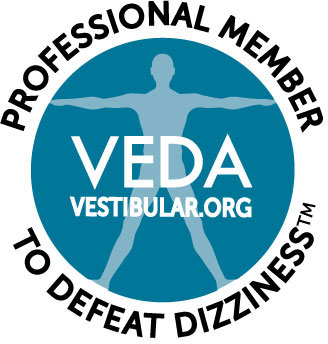Traumatic brain injury (TBI) is an affliction that affects countless people across America. Along with having to deal with the unfortunate circumstances that led to the injury, sufferers of this condition are frequently plagued by numerous problems and symptoms as a result. The two most commonly occurring symptoms are headaches and dizziness.

TBI patients are understandably disturbed by these symptoms, and seek answers and relief through multiple consultations, extensive testing, and various therapies and medications. They often receive little to no relief. This is due to the fact that many of the instances of dizziness and headaches are caused by a little-known vision condition called binocular vision dysfunction (BVD). Fortunately, it has been found that the use of prismatic aligning lenses in a simple pair of eyeglasses can dramatically decrease these occurrences.
More About Binocular Vision Dysfunction (BVD)
Binocular vision dysfunction, or BVD, results when the eyes become out of alignment with each other, making it impossible for them to work together properly. TBI has been shown to trigger BVD, which has two common forms: superior oblique palsy (SOP) and Vertical Heterophoria (VH).
The main cause of SOP and VH is a malfunction in the way the two systems that aim the eyes coordinate. This malfunction can lead to double vision. The brain is unable to deal with this condition and automatically seeks to correct the problem by using the eye muscles to move the eyes back to the correct position. The stress of these continual corrections and the painful strain it puts on overworked eye muscles leads to symptoms of headaches and dizziness, as well as anxiety, nausea, motion sickness and lightheadedness.
BVD patients often tend to tilt their head toward one shoulder, which is another method the body uses to correct the misalignment. This movement moves images up in one eye and down in the other, which compensates for the misalignment, but also can also lead to chronic neck pain.
Symptoms and Consequences of BVD
The quality of life of people who have suffered a TBI can quickly disintegrate with the onset of BVD. Work performance and family life are negatively affected, and enjoyable pastimes such as reading or watching television become a chore instead of a pleasure. Here are just a few of the common symptoms those who are affected by BVD suffer with:
- Pain: Eye pain, neck and upper back pain (due to head tilting).
- Vestibular symptoms: Clumsiness when walking (poor depth perception, unsteadiness, lack of coordination).
- Problems reading: Difficulty with comprehension and concentration, losing one’s place frequently, words blurring together.
- Vision issues: Blurred or double vision, light sensitivity.
- Psychological problems: Anxiety when in crowds or large enclosed places.
Treatment of BVD
Patients with BVD will be happy to know that treatment is available, and it’s as simple as a new pair of very special aligning glasses! First, a patient must undergo an extensive visual exam known as a neurovisual evaluation, in which they will be checked for the small visual misalignments that are causing the BVD symptoms. The alignment issues, as well as problems with near and far vision, will be corrected through the use of prismatic lenses. The customized prescription often provides patients with immediate relief from their symptoms.
At the Neuro Visual Center of New York, our use of innovative aligning prismatic lenses to correct visual misalignments has helped innumerable patients with BVD get their lives back. To learn more about our treatment methods, and how they can change your life, give us a call at (516) 224-4888.





